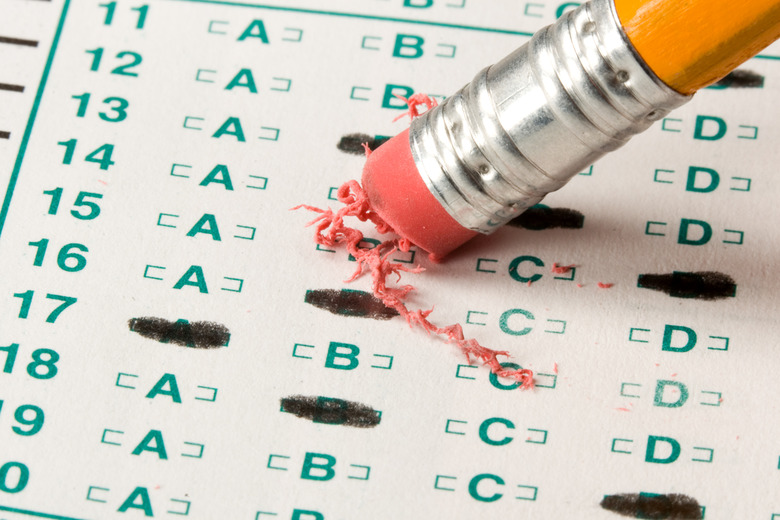How To Calculate A Passing Rate
If you're ever asked to find the pass rate (or passing rate) of a test, it's another way of asking what percentage of students pass the test. From the test-taker's standpoint, knowing the pass rate is an easy way of gauging the test's difficulty. If a lot of students pass, it's probably not too hard; but if the pass rate is very low, you can rest assured the test is difficult. From the problem-solver's standpoint, finding the pass rate is as simple as performing a few basic calculations.
TL;DR (Too Long; Didn't Read)
The pass rate of a test is P = (p ÷ t) × 100, where _P_ is the pass rate, _p_ is the number of students who passed the test, and _t_ is the total number of students who passed the test.
1. Collect Your Facts
In order to calculate the passing rate of a test you'll need to know how many students took the test in total, along with how many students passed. Sometimes it takes a little deductive reasoning to get this information; for example, if you're told that 740 students passed a school-wide test and 54 did not pass, you can find the total number of students who took the test by adding those two numbers together. In this case, you'd have:
740 + 54 = 794 students took the test in total.
2. Divide Pass by Total
Divide the number of students who passed the test by the number of students who took the test. To continue the example just given, you know that 740 students passed the test and 794 students took the test. So you'd divide:
740 ÷ 794 = 0.9320 (Your teacher will tell you how, or if, to round your answer.)
3. Convert to Percentage
Multiply the result from Step 2 by 100 to convert it to a percentage. Continuing the example, you have:
0.9320 × 100 = 93.2 percent
So 93.2 percent of the students passed the test. You could also say that "the test has a pass rate of 93.2 percent."
An Alternative Method for Finding the Passing Rate
An Alternative Method for Finding the Passing Rate
If by chance you know the fail rate or "did not pass" rate of a test or exam, or the percentage of students who fail said test, you can use that information to find the passing rate. Simply subtract the fail rate from 100; the resulting number is the pass rate. So, if you know that 6 percent of students failed, you would subtract:
100 – 6 = 94 percent is the pass rate for the test.
TL;DR (Too Long; Didn't Read)
The concept of a pass rate can be applied to any pass/fail event, from individual tests to specialty events like the bar exam for attorneys, or even an entire academic class.
Cite This Article
MLA
Maloney, Lisa. "How To Calculate A Passing Rate" sciencing.com, https://www.sciencing.com/calculate-passing-rate-7476998/. 14 May 2018.
APA
Maloney, Lisa. (2018, May 14). How To Calculate A Passing Rate. sciencing.com. Retrieved from https://www.sciencing.com/calculate-passing-rate-7476998/
Chicago
Maloney, Lisa. How To Calculate A Passing Rate last modified March 24, 2022. https://www.sciencing.com/calculate-passing-rate-7476998/
